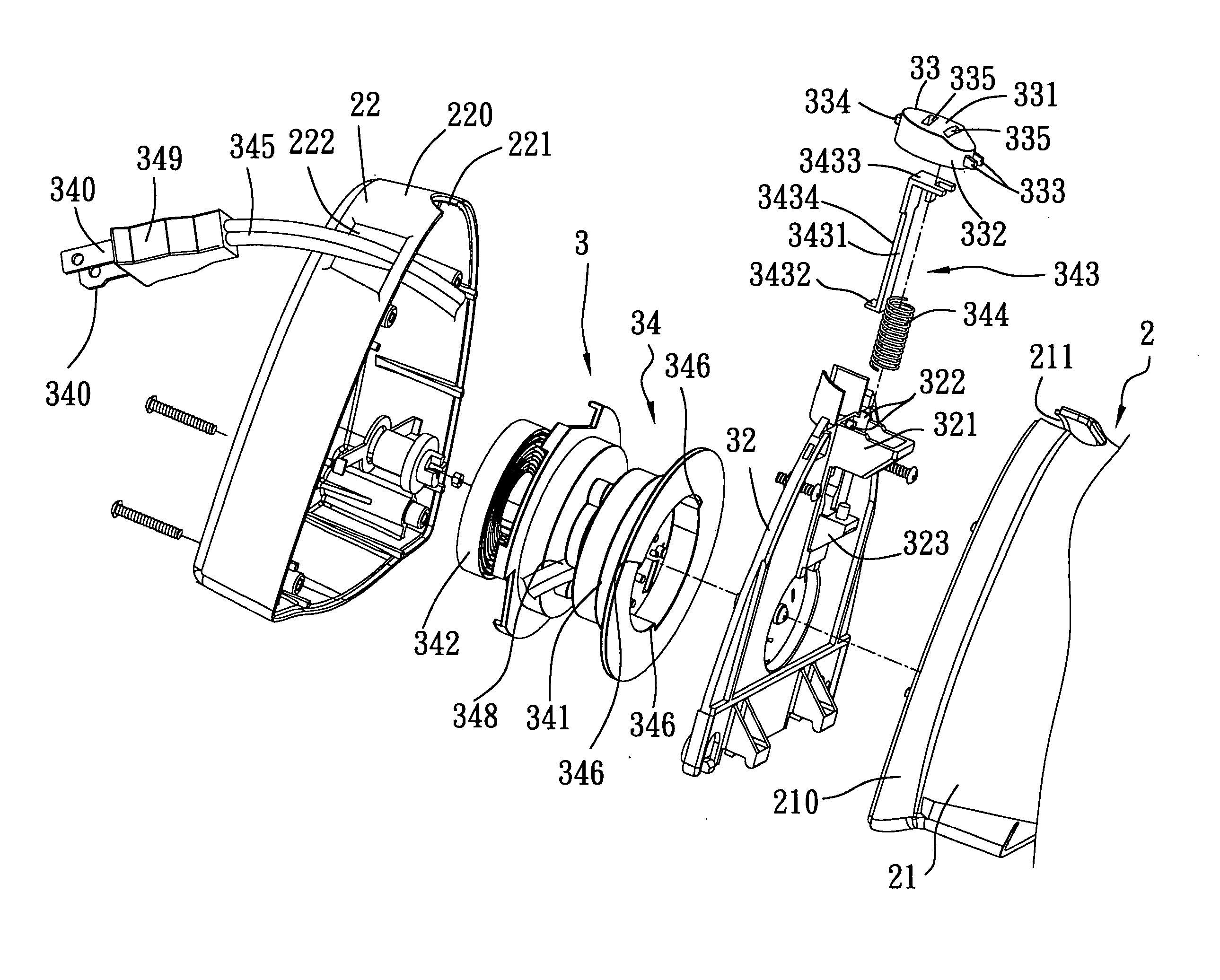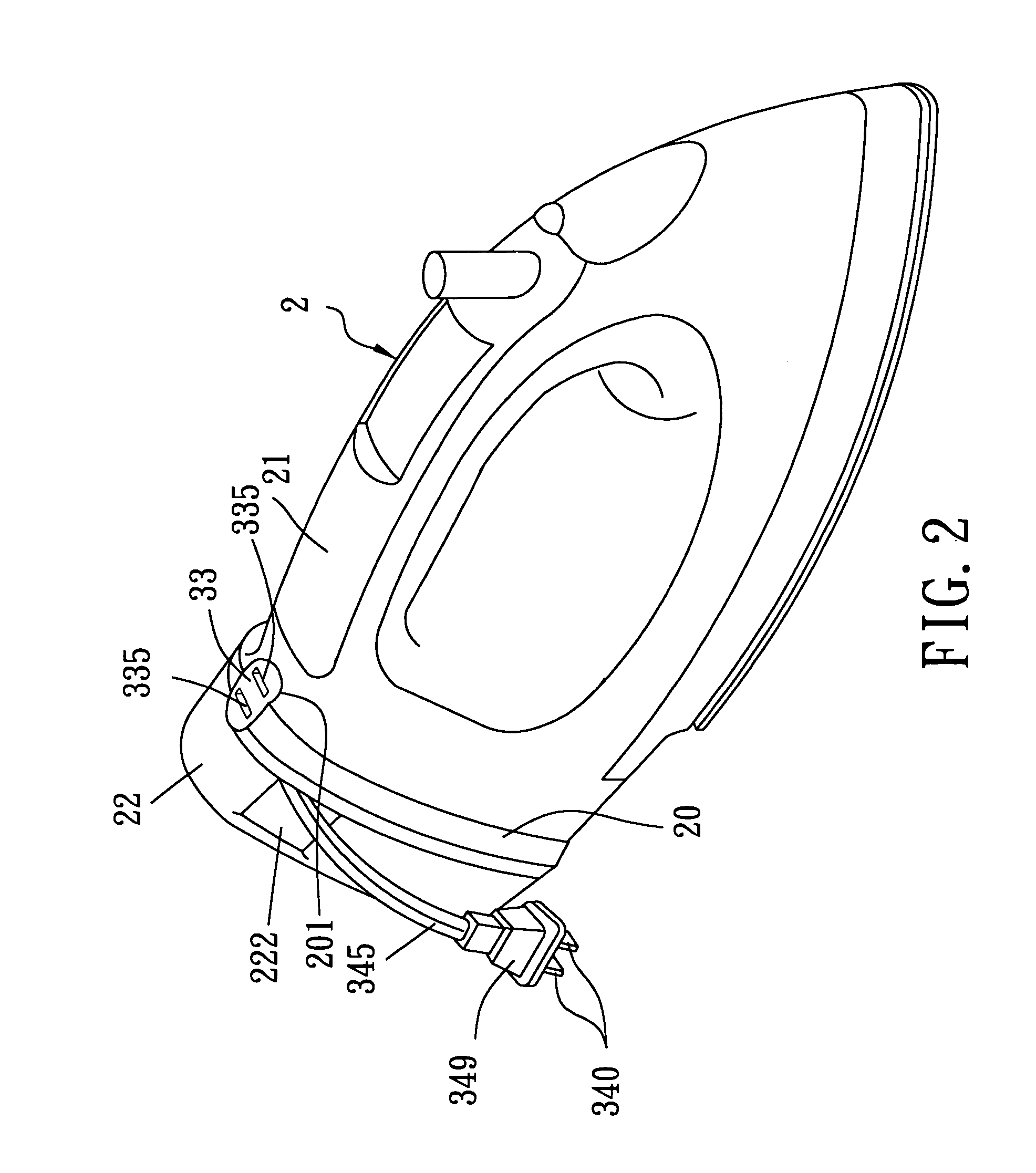Electrical appliance having a wire winding device
- Summary
- Abstract
- Description
- Claims
- Application Information
AI Technical Summary
Benefits of technology
Problems solved by technology
Method used
Image
Examples
Embodiment Construction
[0021] Before the present invention is described in greater detail, it should be noted that like elements are denoted by the same reference numerals throughout the disclosure.
[0022] Referring to FIGS. 2 to 4, the first preferred embodiment of an electrical appliance according to the present invention is shown to comprise a main housing 2 enclosing an electric unit (not shown), and a wire winding device 3. In this embodiment, the electrical appliance is exemplified as a press iron. However, other electrical appliances, such as a vacuum cleaner, a coffee maker, cooking appliance, etc., are also applicable in the present invention.
[0023] The main housing 2 has a front housing 21 with a front wall 210, a rear housing 22 with a rear wall 220 that cooperates with the front wall 210 to form an outer wall 20 (see FIG. 2), and a partition plate 32. The front wall 210 has a notch portion 211 (see FIG. 3) formed on a top periphery thereof and extending frontwardly. The rear wall 220 has a no...
PUM
 Login to View More
Login to View More Abstract
Description
Claims
Application Information
 Login to View More
Login to View More - R&D
- Intellectual Property
- Life Sciences
- Materials
- Tech Scout
- Unparalleled Data Quality
- Higher Quality Content
- 60% Fewer Hallucinations
Browse by: Latest US Patents, China's latest patents, Technical Efficacy Thesaurus, Application Domain, Technology Topic, Popular Technical Reports.
© 2025 PatSnap. All rights reserved.Legal|Privacy policy|Modern Slavery Act Transparency Statement|Sitemap|About US| Contact US: help@patsnap.com



